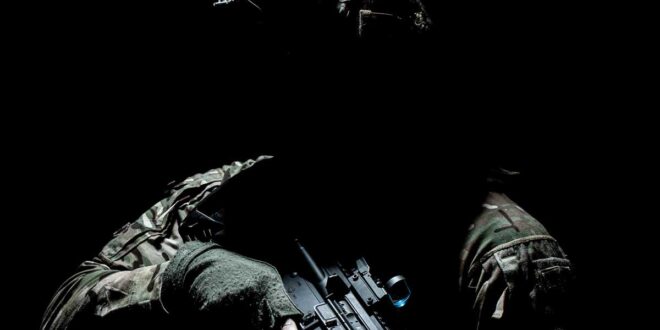Alan Cunningham
Covert action (CA) is a very sensitive and controversial area, partly due to the fact that historically, there have been many oversteps and misuses, including domestic spying, illegal paramilitary action, and taking actions that were largely counterproductive. With the Russia-Ukraine conflict well underway, some in the media, foreign policy experts, academics, and intelligence professionals, have been calling for the use of covert action and operations against Russia.
CA is defined by the U.S. legal system as “an activity or activities of the United States Government to influence political, economic, or military conditions abroad, where it is intended that the role of the United States Government will not be apparent or acknowledged publicly” with the three main pillars of CA being “propaganda, political action, and paramilitary action”. CA has been in use, at least by the United States, since the early days of the Cold War, with such examples being the 1953 Iranian coup d’état, the 1954 coup in Guatemala, and U.S. involvement in the 1989 Soviet-Afghan War are all prime historical examples of covert action in modern foreign policy.
However, largely due to the conduct of CA in these historical examples, which are multiple (and often legally dubious), the U.S. Executive Branch has created mandates based upon congressional investigations and committee recommendations which have allowed further oversight of the Intelligence Community when dealing with CA matters.
Oversight of the IC and the CIA was extremely lax from 1947 to the early-1970s. It was only with congressional and executive committees like Pike, Church, and Rockefellerthat efforts were made to produce oversight of these intelligence agencies and their activities. The start of this oversight came with the Ford, Carter, and Reagan Administrations when they acted upon the recommendations of the Committees, passed legislation to create FISA courts, and signed Executive Order 12333 which officially laid out what the IC could and could not do. In terms of CA, how the IC could gain permission to take a specific action was made explicitly clear and has been continually updated following scandals, reports, and investigations into tactics.
The Belfer Center for Science and International Affairs describes this adeptly, writing, “U.S. law authorizes CIA to “conduct covert action activities approved by the President.”… The National Security Council (NSC) will “consider and submit to the President a policy recommendation, including all dissents, on each proposed covert action.”…The Director of National Intelligence (DNI) shall oversee and provide advice to the President and the NSC with respect to all ongoing and proposed covert action programs”. Additionally, “the 1980 Intelligence Oversight Act required notice of covert action to the two intelligence committees”. While these measures seemed to be effective, they were quickly put to the test with the Iran-Contra scandal.
The Iran-Contra Scandal was basically an arms for hostages deal in which arms were sold to Iran, “in the mistaken belief that such a sale would secure the release of the American hostages… A portion of the $48 million that Iran had paid for the arms was diverted by the NSC and given to the contras… [NSC staff member Lieutenant Colonel Oliver] North and his associates also raised private funds for the contras, and the transfer of arms and other matériel to the counterrevolutionaries was conducted by an organization known as the Enterprise… Aid for the contras was also solicited and obtained from third-party countries, which laid the groundwork for potential quid pro quo requests from them”. These actions violated various U.S. policies and legislative amendments and, “[initial covert action documents from the Reagan Administration] contained specific instructions that the Congressional oversight committees not be told of these activities”.
In response, Congress passed the 1991 Intelligence Authorization Act which stated that, “The President must determine, through a document called a presidential finding, that a covert action is necessary to support “identifiable foreign policy objectives” of the U.S. A written finding must be issued within 48 hours after the official policy decision which approves the covert action. The CIA Director and the heads of all departments, agencies, and entities of the Government involved in a covert action shall keep the congressional intelligence committees fully and currently informed. When the President determines that extraordinary circumstances make it essential to limit access to information about the covert action program, the finding may be reported to the Gang of Eight”.
With CA, notification of an operation in the works allows the Congressional committees and the Executive Branch to be aware of an operation’s legality, the effect this may have upon a country or region and the effect this action would have upon U.S. foreign policy. It also adds another layer of oversight in order to try and prevent past abuses upon American citizens or illegal action denied by Congress from becoming commonplace or a mainstay of the Intelligence Community. This oversight is essential to ensuring that operations are conducted legally, both domestically and internationally, and in accordance with the virtues and ideals of the United States.
In an era where there is widespread condemnation of abuses of international law, from Wall Street to the halls of political power the world over, all forms of covert action must be considered carefully and carried out in accordance with whatever rules, stipulations, or regulations are enforced within the nation. In the case of the Russian invasion of Ukraine, CA is an effective solution to assisting the Ukrainian people in their fight for freedom and autonomy from Russia. However, any covert actions taken in support of the Ukrainian people must be taken carefully and with respect to the historical contexts of these operations.
 Geostrategic Media Political Commentary, Analysis, Security, Defense
Geostrategic Media Political Commentary, Analysis, Security, Defense





